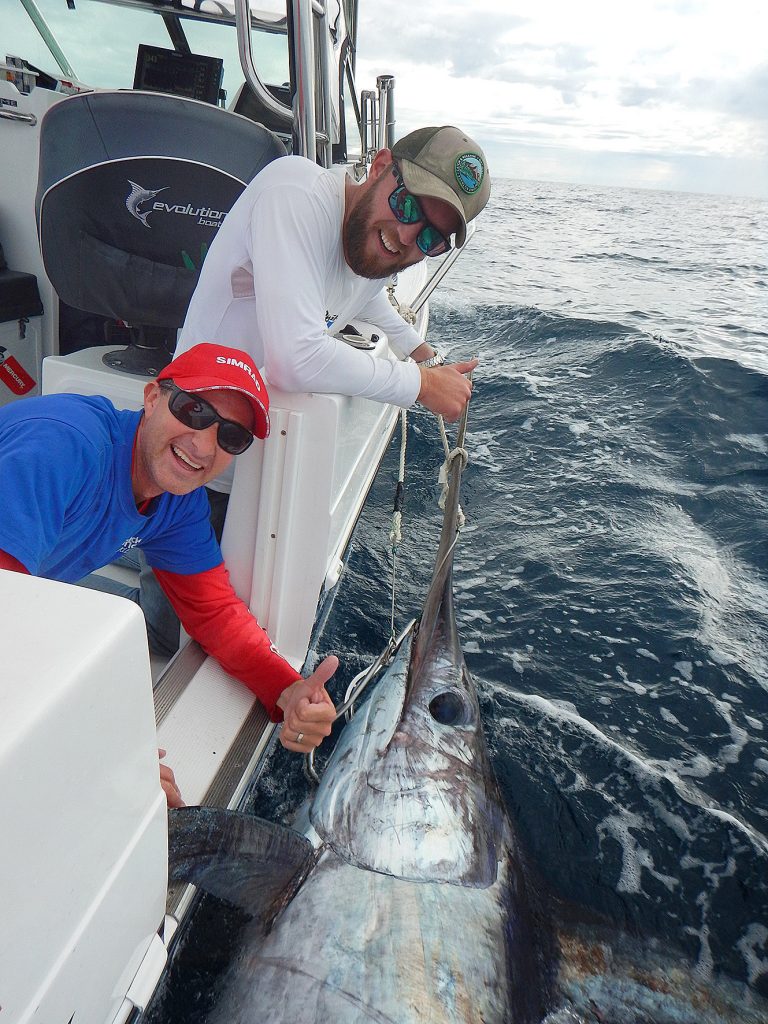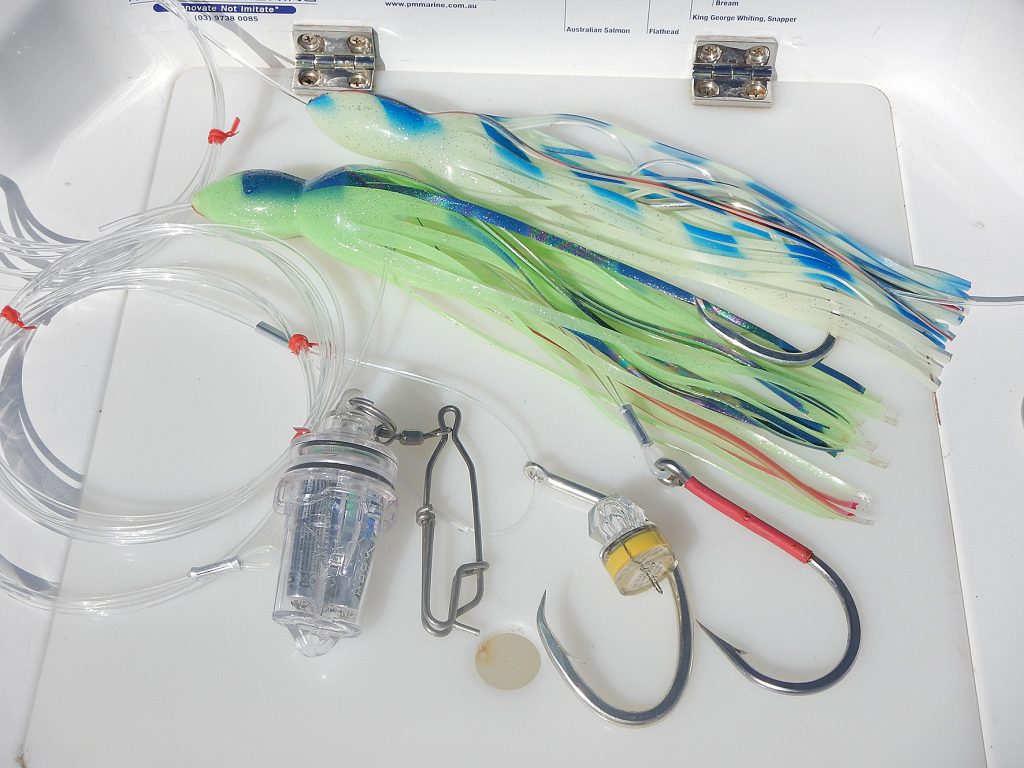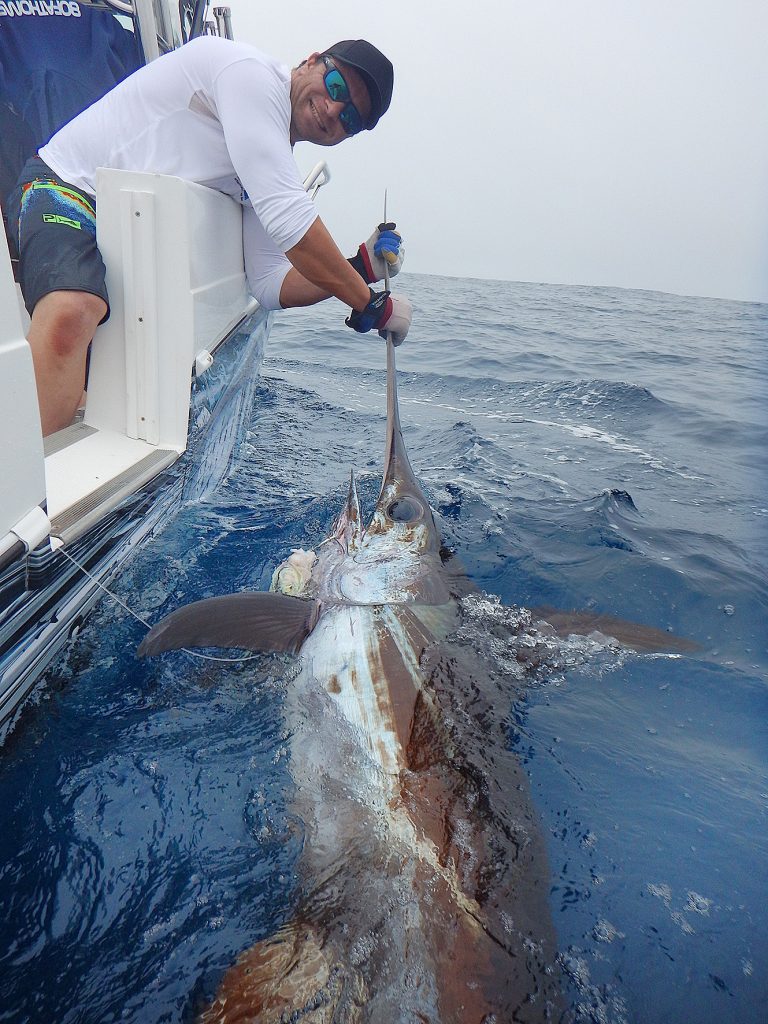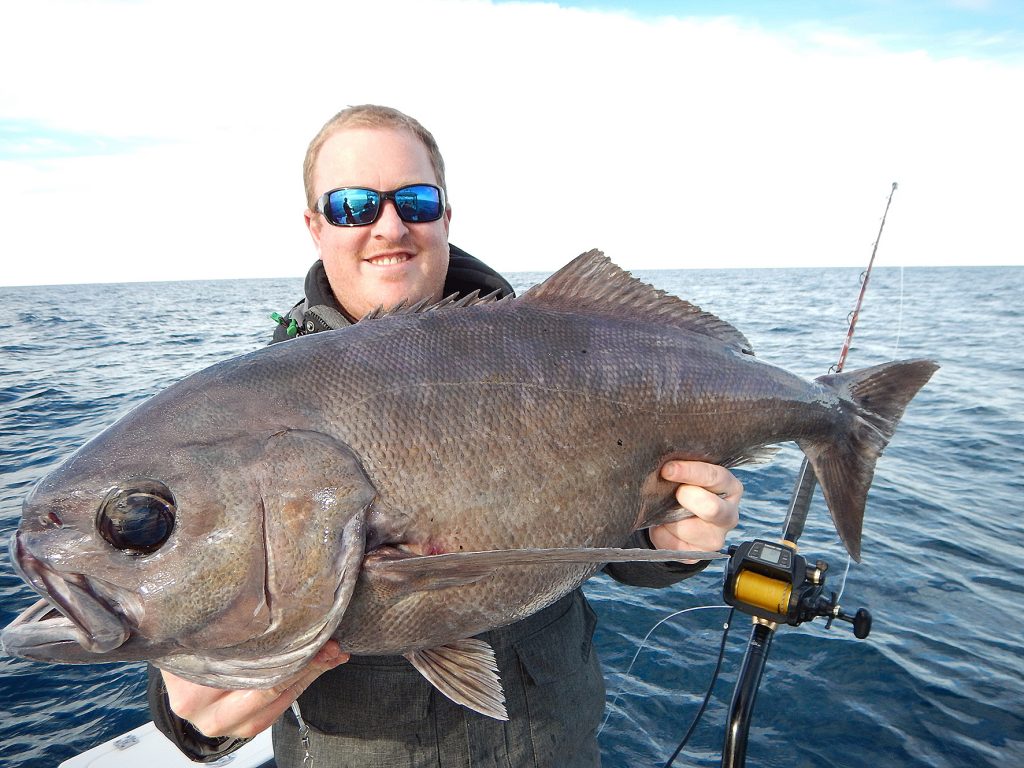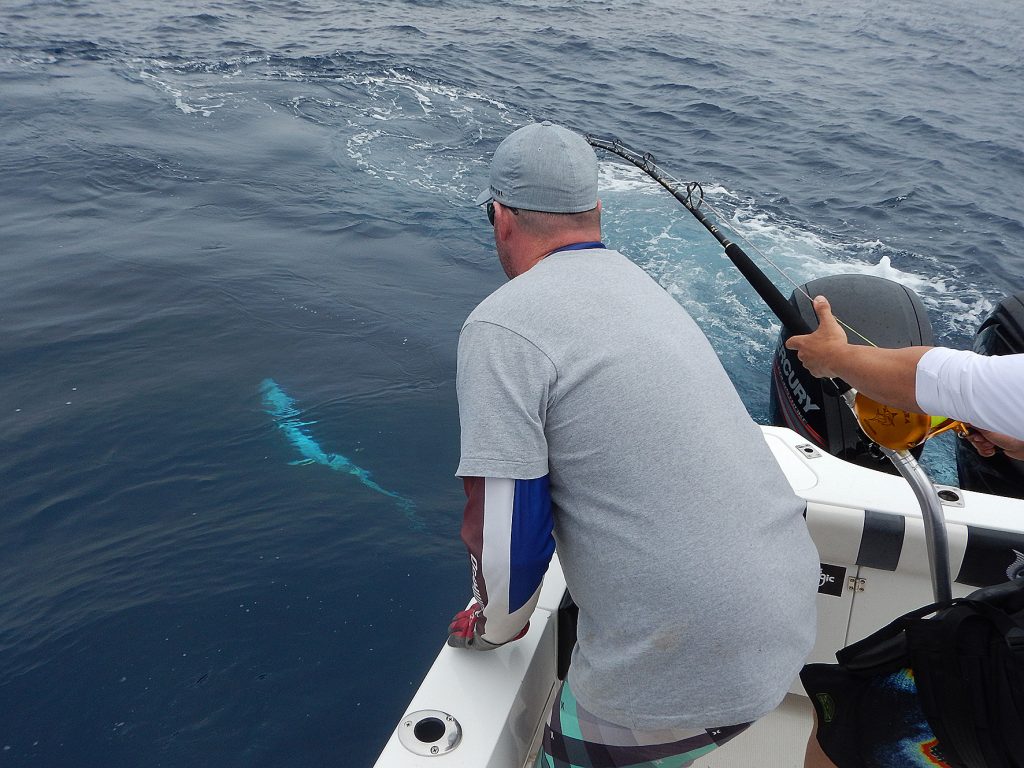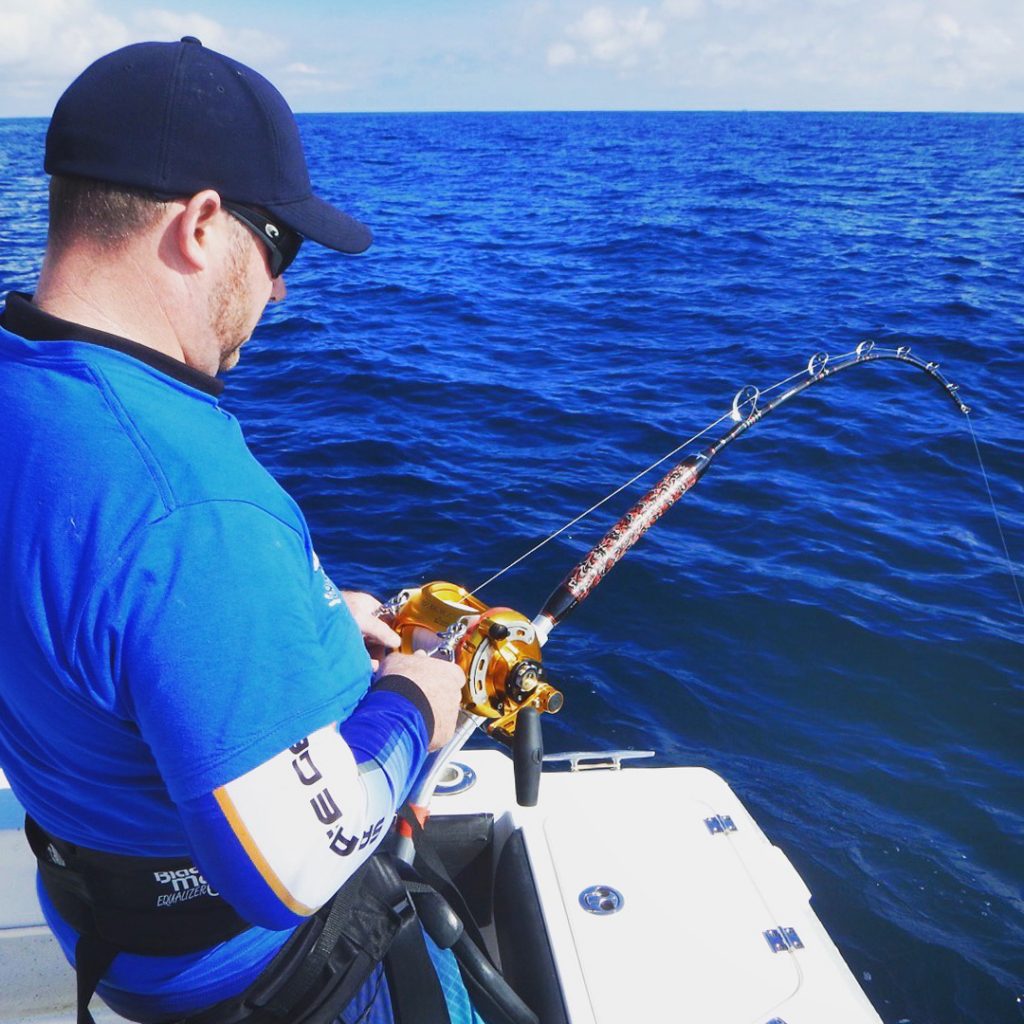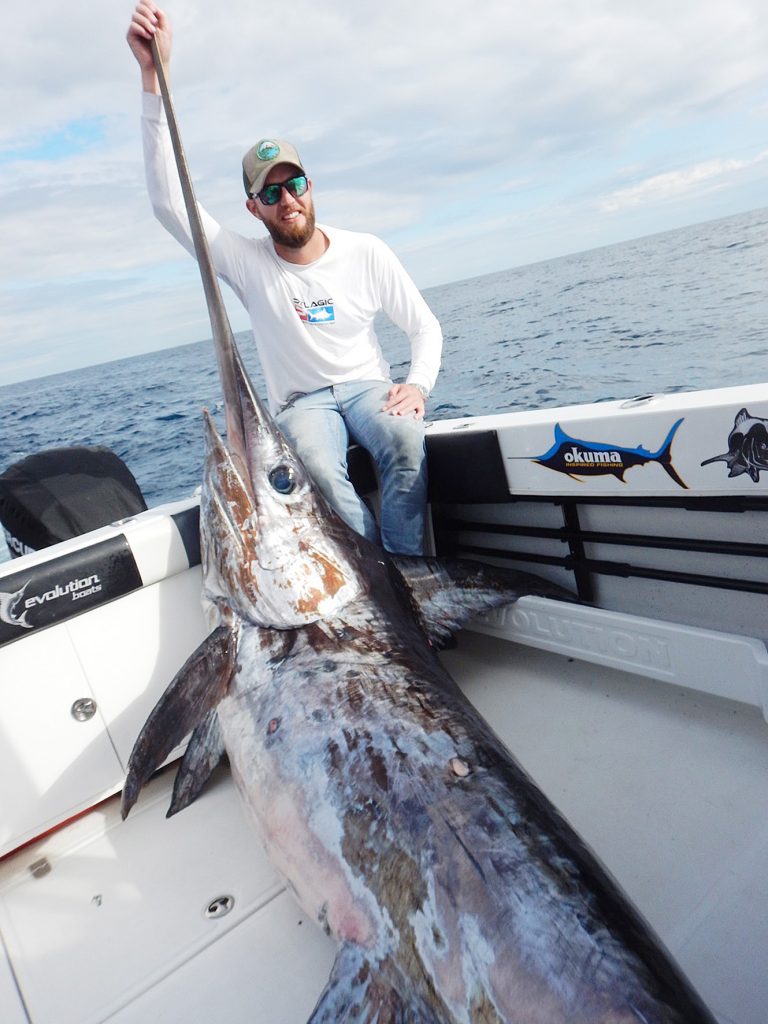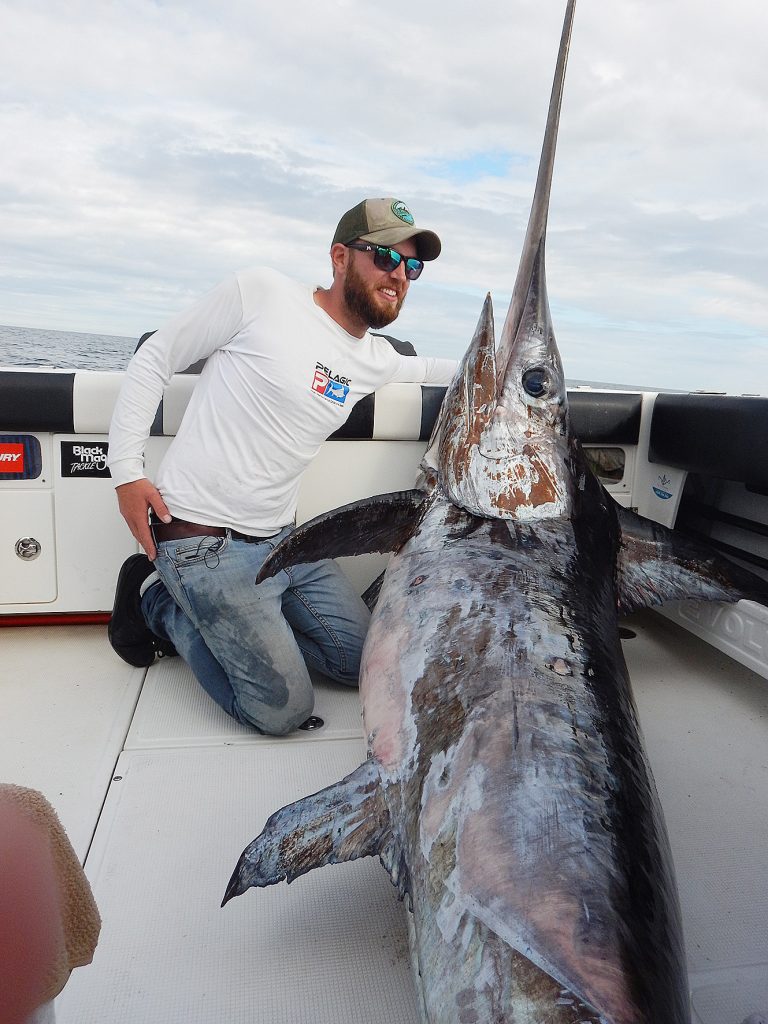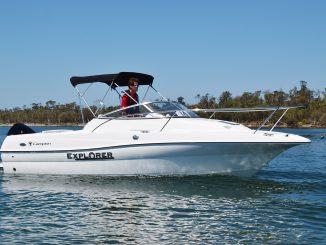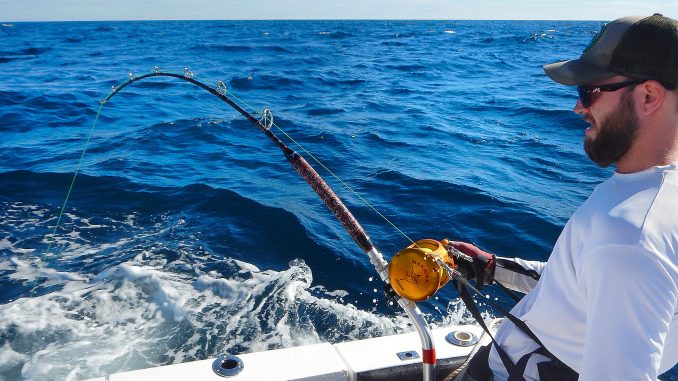
by Lee Rayner •
A few years ago if someone said you could catch a swordfish in daylight hours, you would have thought they were on the crazy pills, but that was quickly changed when anglers overseas started to catch these giants of the ocean with a bit of regularity. It also gained momentum very quickly as anglers also realised that there were good numbers of swords feeding all day long down in the depths.
Fast forward a few years and anglers have started to make a few attempts at catching swords, and catch them they certainly did. The lid was blown off in our own Victorian waters back in 2016 when Matt Porter landed the first one in Victoria. Funny thing was that after getting that fish Matt realised that he had in fact had bites and hooked several other swords before he landed this one.
A week later I was fortunate enough to be on board the boat with Julian Coyne and Richie Abela when we went to Mallacoota in search of a marlin bite. While we were there Richie said we needed to drop a bait for a sword. When the water we were fishing held no marlin, our plans changed and a bait was sent down.
That trip changed our lives forever as the bait was eaten as soon as it hit the bottom by a swordfish that we later landed. Then to back it up we got two more the following day. This had our heads spinning, as we couldn’t believe it was possible to catch broadbill and multiples of them on a daily basis.
Since that trip a lot of miles have been covered, things learned, techniques refined and tackle developed for catching these giants in our own Victorian waters.
The other thing that has quickly become apparent is that not only are there numbers of fish in our waters but the size of some of the fish is gigantic. Even the average-size fish in Tasmania would rival any other swordfish location in the world and best of all it’s on our doorstep. From what we have learned so far, it seems that right now is the time to go and catch one.
Safety First
While we have world-class swordfish opportunities here, our only downside is that the good areas are all long hauls from land, 60-90km runs offshore are fairly standard. Adding to this the ramps are not suitable in all conditions, so having a large enough boat and enough fuel capacity is paramount. Choosing calm weather patterns is also a must, and it also makes fishing for these fish much easier and more comfortable.
Make sure all safety gear is well and truly up to scratch as the water police often run out to the shelf to check anglers for safety gear and licenses.
Locations
One thing that has become very apparent is that swordfish can, and do, cover a lot of ground in their endless hunt for food. Luckily for us, the coastline between Lakes Entrance and Mallacoota has kilometres of good areas to find swordfish. The key areas to search are along the outside edge of the continental shelf in anything from 300-600m of water, with kinks, canyons and any change in feature generally being prime areas.
The other key factor to finding swordfish – just like any other gamefish is to find the bait – as these guys have big appetites and will always be in areas of high food concentrations, which down deep is called a ‘scatter’ or ‘feed’ layer. This is made up of micro-organisms and small baitfish and squid. This in turn attracts bigger fish and squid, which then attract the swords.
To find these key areas to fish you require a good sounder and a suitable deep water transducer. I run a Simrad EVO3 12” unit with a 1kw low chirp transducer. Not only does it read the bottom clearly at these depths, it also highlights the feed layer and where it’s thicker or more densely packed, which highlights key spots to fish. A good sounder setup will also help to clearly mark any fish in the area.
Tackling Up
People often ask me what swords fight like and while they can have incredible bursts of speed and perform some spectacular jumps, for the most part it’s like being hooked up to a 4WD in low gear. For this reason, some serious tackle is required to land them.
When it comes to reel choices there are plenty to choose from. While any 50W game reel will do the job when filled with braid, due to their smaller size by the time the bait is down on the bottom there isn’t a lot of line left on the reel. Most anglers prefer to use reels like the Tiagra 80W, Makaira 80W or the Penn 70VSX, as these hold loads of braid and the bigger spool diameter also means you get great line retrieval. The other super popular reel nowadays is the Talica 50, which has a large spool diameter and high retrieve speed in a compact overhead.
Reels are filled with anything from 50-130lb braid with 80lb being the most popular. Attach a topshot; 50-100m allows a good bit of stretch in the system. Saying that, the great thing about this emerging fishery is that anglers are evolving and coming up with new ideas and theories, so the length of topshots is creating a lot of discussions.
When it comes to the rod, I recommend a soft tipped rod (to be able to see the bite) which folds away to a powerful butt section capable of comfortably fishing 12-16kg of drag. As for the guides, most anglers use rollers, but I love full fixed guides; they allow leader knots and wind-on leaders to pass through the guides easily and, best of all, the rod can sit in the holder waiting for a bite or even loaded up on a fish with the line able to pull at any angle without any worry of braid slipping between the roller and frame.
My sword rods are 80 Fathoms custom sword rods and I’ve caught a bunch of fish and, more importantly, spent a lot of hours fighting fish. I prefer a bent butt system on the rod as they are made for up and down fights on heavy drag.
It’s Terminal
While you need to get a bit of stuff to chase swords, the upside is that it doesn’t require six rods and a million lures. What you will need, however, is a few lights to go on your rig. These are super important to your success – these lights will attract the swordfish to your bait in the darkness below. While there are loads of lights to choose from, Lindgren Pittman offer a bunch of colours; my favourite are the disco colours. These lights aren’t cheap but are fully water and pressure tested, so you know they are working properly 500m below you. Add to this a few small diamond lights, big rubber bands, wax thread, stitching needles and rigs.
Most of our rigs are made up on 300lb leader, but some anglers use up to 600lb. Hook choice is a personal one. You should have a few hook options. It’s important to match the suitable hook to the bait. The Black Magic Big Game 9/0 and 10/0 are great hooks for belly flaps, while the Mustad 7699D in 12/0 and 14/0 is perfect in a squid.
A lot of anglers are now going towards circles as they allow for a good release and are a great way to fish for swords, as the hardest part is often hooking them. The most important part of using circles is to make sure the bait is well clear of the hook. Move towards fish baits such as mackerel, small tuna or belly flap baits, that way it won’t foul up on the hook like a squid might.
Harnesses, gloves and gaffs
If you don’t have a harness, definitely get one and make it a good one. Have it adjusted to the angler who is going to be on the rod before you hook up. As an added extra, you can also upgrade the gimbal belt from the standard to the XL size, as the bigger size spreads the load better on heavy drag, making it more comfortable to fish over extended periods.
Good tracing gloves are also important; with the heavier leader you can hold on when you get that sword in range. When you do, if you’re keeping it, make sure you have a few gaffs ready. Have at least one but preferably two fliers tied off. I also like a good fixed gaff that is small and ultra tough.
Going Down
You’ve got the gear and the bait and you’re out over the shelf, now you need to get that bait down to the bottom hundreds of metres below. One thing’s for sure, it’s going to take more than a snapper lead to do it.
Getting your bait down to a sword has seen anglers come up with plenty of clever ideas that range from rocks to bottles filled with sand and bricks. No matter how you get it there, it needs to be attached to the rig with a few metres of light mono that is used as a breakaway, that way once the weight and bait are down you can either leave the weight attached or break the weight off and allow the bait to slowly float up.
How it happens
When the weather’s on your side and you’ve made the run out to the chosen area you plan to fish, sound around and find a solid feed layer down near the bottom. Then it’s time to get a bait in the water and hopefully into the mouth of a sword.
Lights are attached up the line away from the bait, the weight is dropped and the bait races away behind it with flashing lights in tow and a reel in overdrive as it dumps line off the spool.
After several minutes it hits the bottom and the decision is made to crack the weight off; this is done by winding up the slack then, once rod is loaded, giving it a few sharp winds and jerks of the rod to snap the breakaway.
With the weight off it’s critical every eye is watching the rod tip for any sign of a bite, which is usually a subtle bump on the rod tip – this is where a properly developed swordfish rod comes into its own. It’s worth noting a lot of the bites come in the first few minutes, as any sword in the area comes racing in to see the commotion of lights.
Five minutes later it happens. The rod registers two subtle knocks then the line appears to go slack – the sword has the bait and is now racing to the surface.
It’s time to start winding. With only a hundred metres or so to go everything stops, the rod loads up and gets really heavy before line starts coming off the reel under serious drag pressure.
At this point the angler sits back and uses the harness and the tackle to beat the fish, while the skipper changes angles on the line to try and break the fish and get it to surface. The fight may last less than an hour or it could still be going when the sun sets. Either way, you’re tight on one of the most impressive fish in the ocean, so enjoy it.
At the end if you choose to keep it or release the sword its your choice, but if you do keep it, respect the fish for the gladiator it is, take the time to get good photos in the boat, and back on land take the time to cut it up and package the meat properly as it makes great eating, and best of all it freezes well so none should go to waste.

